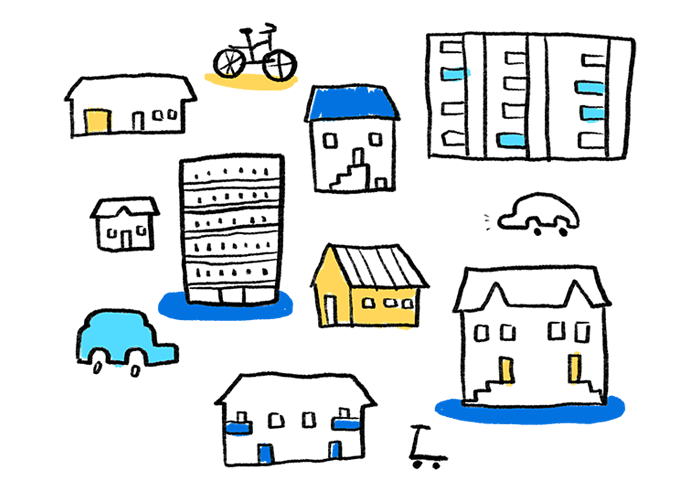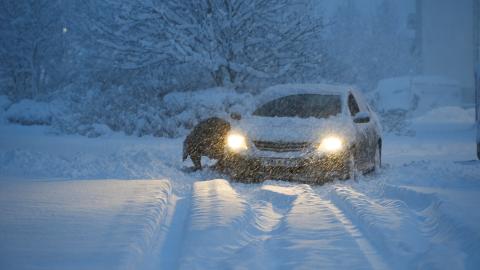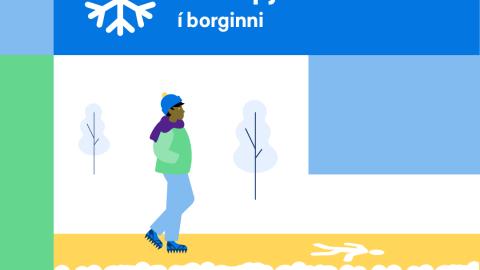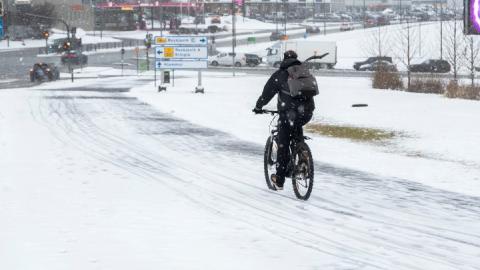Snow and ice clearing
When snow falls or if there is slippery ice in Reykjavík, we work according to the winter service contingency plan, and the snow shift goes to work.
Conditions are monitored regularly and workers are sent out as needed.
When is it my turn?
Naturally, you want to know when your street is cleared.
Priority is given to main roads, bus routes, and busy collecting roads.
Residential streets are cleared if they are hard to drive in private vehicles, they are very slippery, or if the snow is higher than 10 cm (about 6’’). However, we do not always follow this rule.
Snow clearing is limited to making streets drivable.
Snowbanks—that Reykjavík does not clear—will likely form by driveways.

A technical malfunction is affecting the tracking system, making it unreliable. Repairs are currently in progress.
Winter services at work
Here you can see where winter service has been active in the past 48 hours, including de-icing and snow plowing operations.
Where can I get salt and sand?
Salt and sand can be picked up during the opening hours of the City Land District Depot in Stórhöfði. We also have bins with salt and sand accessible outside the district depots at Fiskislóð and Jafnasel.
Outside of business hours, residents can access road salt for ice prevention from piles located at several spots on city land. Remember to bring a container, like a bucket, and a shovel to scoop the salt into your container.
Prioritization
Main roads, bus routes, and busy collecting roads are prioritized, and we aim to clear main roads and bus routes by 7am and clearing other main roads by 8am.
Main paths, such as walking and biking paths between city districts, receive priority clearing, followed by main pedestrian paths to bus stops and schools that should be easy to use by 8am on weekdays. Other public paths should be cleared by noon. Any remaining paths should be cleared within 36 hours or the day after snow stops falling.
Snow clearing at bus stops, as well as sanding and salting access routes, is done as required. We also clear pedestrian paths and parking spaces at preschools, primary schools, swimming pools and several workplaces for the Welfare Department.
Service Categories
Snow clearing follows a preset priority plan to make everything function well.
Streets
- Service Category 1: Main roads, important connecting roads for emergency services, busy collecting roads, and bus routes.
- Service Category 2: Other collecting roads and access to preschools and primary schools.
- Service Category 3: Residential streets.
Paths
- Service Category 1a: Bike paths.
- Service Category 1: Main paths.
- Service Category 2: Other busy paths.
- Service Category 3: Less busy paths, often near residential streets.

Salt or sand?
Busy roads are cleared by large, fast snow-removing machines that use salt for ice clearing. Increasingly, we have used road salt brine with great success against icing. The aim is to ensure safety with as little salt as possible.
For sidewalks and paths, specialized plowing vehicles are used and road salt or, occasionally, washed sand or road salt brine is applied for de-icing.
What is the Snow Shift?
The snow shift assesses the conditions when needed, including in the middle of the night. When the conditions call for snow ploughing, snow clearing, or ice clearing, the snow shift goes to work. The snow shift has people on-call from the end of November to the end of March—or as needed. Work on snow clearing often starts at 4am.
Ensuring easy access
Reykjavík City snow clearing, snow plowing, and ice clearing tasks consist of three parts depending on whether it is for busy roads, paths and pavements, or institutional lots and bus shelters.
Circumstances call for different equipment and methods, but the aim is the same: to ensure easy access. Reykjavík City invites residents to pick up sand and salt from its district and parks maintenance yards to improve safety on neighborhood pathways and private driveways.
On a steep slope?
If you live on a street where conditions are difficult, such as on a steep slope, you can get a salt box.
- The Reykjavík City Service Center gives more information by phone: 411 1111.
Please note that on snowy days, the customer service team is busy, and we ask that you be patient.





